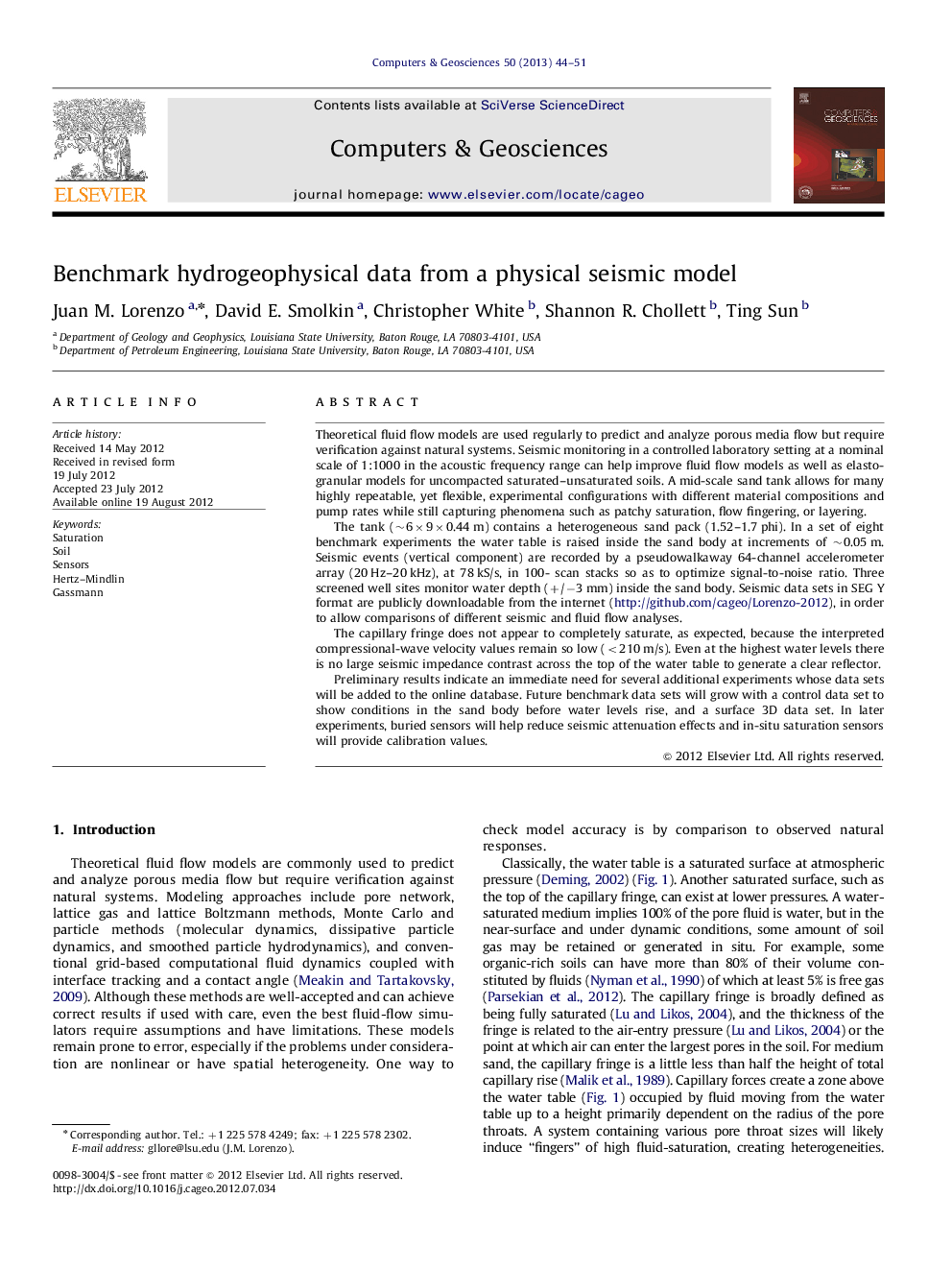| کد مقاله | کد نشریه | سال انتشار | مقاله انگلیسی | نسخه تمام متن |
|---|---|---|---|---|
| 507348 | 865117 | 2013 | 8 صفحه PDF | دانلود رایگان |

Theoretical fluid flow models are used regularly to predict and analyze porous media flow but require verification against natural systems. Seismic monitoring in a controlled laboratory setting at a nominal scale of 1:1000 in the acoustic frequency range can help improve fluid flow models as well as elasto-granular models for uncompacted saturated–unsaturated soils. A mid-scale sand tank allows for many highly repeatable, yet flexible, experimental configurations with different material compositions and pump rates while still capturing phenomena such as patchy saturation, flow fingering, or layering.The tank (∼6×9×0.44 m) contains a heterogeneous sand pack (1.52–1.7 phi). In a set of eight benchmark experiments the water table is raised inside the sand body at increments of ∼0.05 m. Seismic events (vertical component) are recorded by a pseudowalkaway 64-channel accelerometer array (20 Hz–20 kHz), at 78 kS/s, in 100- scan stacks so as to optimize signal-to-noise ratio. Three screened well sites monitor water depth (+/−3 mm) inside the sand body. Seismic data sets in SEG Y format are publicly downloadable from the internet (http://github.com/cageo/Lorenzo-2012), in order to allow comparisons of different seismic and fluid flow analyses.The capillary fringe does not appear to completely saturate, as expected, because the interpreted compressional-wave velocity values remain so low (<210 m/s). Even at the highest water levels there is no large seismic impedance contrast across the top of the water table to generate a clear reflector.Preliminary results indicate an immediate need for several additional experiments whose data sets will be added to the online database. Future benchmark data sets will grow with a control data set to show conditions in the sand body before water levels rise, and a surface 3D data set. In later experiments, buried sensors will help reduce seismic attenuation effects and in-situ saturation sensors will provide calibration values.
► Eight benchmark seismic data sets sample an unsaturated sand wedge.
► The water table is raised inside the sand body at increments of ∼0.05 m.
► A pseudowalkaway- 64-channel array (20–20 kHz) records vertical accelerations.
► As water levels rise, Vp gradients increase and near-surface VP values decrease.
Journal: Computers & Geosciences - Volume 50, January 2013, Pages 44–51